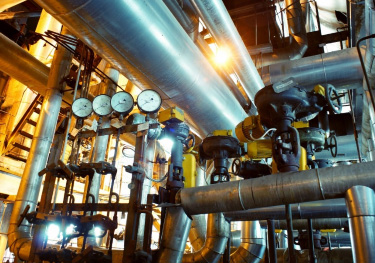

Increased demands on the world’s water and energy resources, which cannot be met through exploitation of conventional methods, require new technologies to keep up with demand. However, current technologies have several limitations which hinder commercialization and implementation. Increasing demands on conventional water and energy supplies necessitates the development of new technologies to keep pace with worldwide development. This project aims to develop new supramolecular materials capable of acting as functional membranes in either fuel cell devices or perform water desalination.
For water desalination, we aim to produce anti–fouling barriers for commercial polyamide (PA) membranes based upon novel supramolecular and hybrid covalent/mechanically interlocked architectures. This hybrid, cooperative polymerization method combines the advantages of both covalent and supramolecular approaches, generating a membrane which has a pore size that is easy to modulate; an essential characteristic for effective water desalination. Moreover, the resulting porous materials have numerous advantages: 1) They are environmentally friendly, on account of them being composed of biodegradable components, 2) The mechanically interlocked polymers are hydrophilic in character, which will both accelerate water transportation and reduce energy costs, 3) The synthetic procedures are high yielding and easily scalable.
For the development of effective membranes for fuel cells, we have produced a polymer derived from commercially available, cheap and sulfonic group–free starting materials. The polymers have high yielding, yet facile syntheses, and have enhanced thermal stabilities, a desirable quality for a potential proton–exchange membrane. The polymer possesses high proton conductivity and efficiency and can be fabricated into robust membrane materials by solution casting. We have also begun to explore the chemistry of self–assembled films comprised of a series of redox–active bola–amphiphilic units which can aggregate to form supramolecular materials that may have interesting proton–conduction properties.
Success in this project will improve the performance and efficiency of water treatment and fuel cells, minimize environmental impacts, and promote water security, public health, economic and renewable energy development in Saudi Arabia
The increasing demand for both energy and high–quality water in the modern world, coupled with the decreasing conventional supplies of both resources means that materials designed to alleviate these pressures are of great interest. However, there are challenges associated with addressing both of these concerns.
The most widely–used approach to desalination is to physically separate the components by reverse osmosis, however, this process consumes large amounts of energy. Moreover, the construction of porous materials with fine pore–size control to desalinate water effectively is a considerable challenge. Porous polymeric materials formed by covalent polymerization have poor control over both pore size and pore density and supramolecular–based polymers, despite having better control over these parameters, are not yet robust enough for effective desalination.
The development of proton–exchange membrane (PEM) fuel cells, intended for use in transportation to reduce the environmental impact of energy consumption, is hindered due to the high cost and short lifetimes of the membrane materials employed. Moreover, the majority of membranes thus far produced have been found to degrade rapidly at higher temperatures, in contrast to the desirable quality of membranes being able over a wide temperature range. These factors contribute to the limited commercialization of this technology.
For the water desalination project, the hybrid polymeric species investigated were obtained through the cooperative polymerization of a series of monomeric units, generating an interlocked network. The formation of nanosheet morphologies from this interlocked network was confirmed using various microscopic techniques, including atomic force microscopy (AFM) and high-resolution transmission electron microscopy (TEM). The TEM images also showed that the 2D nanosheets self-assembled into highly ordered brick-like architectures, which may be of great benefit for effective and high-efficiency desalination performance. This was further corroborated by powder X-ray diffraction (PXRD) data, which confirmed that highly ordered materials were formed after the self-assembly process was complete. The films produced from these nanosheets also displayed a significant level of fluorescence when irradiated with UV light. The intensity of the fluorescence may be indicative of the level of degradation that the material has suffered, and could be used to monitor the stability of the membranes produced.
The covalent polymers produced for the fuel cell project could be formed in a one-step, acid catalyzed reaction. The macromolecular structures formed by these polymers was then be characterized using a series of spectroscopic techniques and size-exclusion chromatography. The organic solubility of these polymers allowed membrane materials to be fabricated by solution casting. Water-vapor adsorption isotherms demonstrated that the covalent polymer could 23% of its own weight in water, and that the adsorbed water was retained even when relative humidity was lowered to 25%. The properties of the self-assembled films composed of bola-amphiphilic monomers were studied using a series of microscopic techniques including atomic force microscopy, transmission electron microscopy and scanning electron microscopy, alongside UV/Vis spectroscopy and powder X-ray diffraction. The different morphologies of the systems studied by these techinques were obtained by varying the drop-casting conditions used to obtain the self-assembled films.